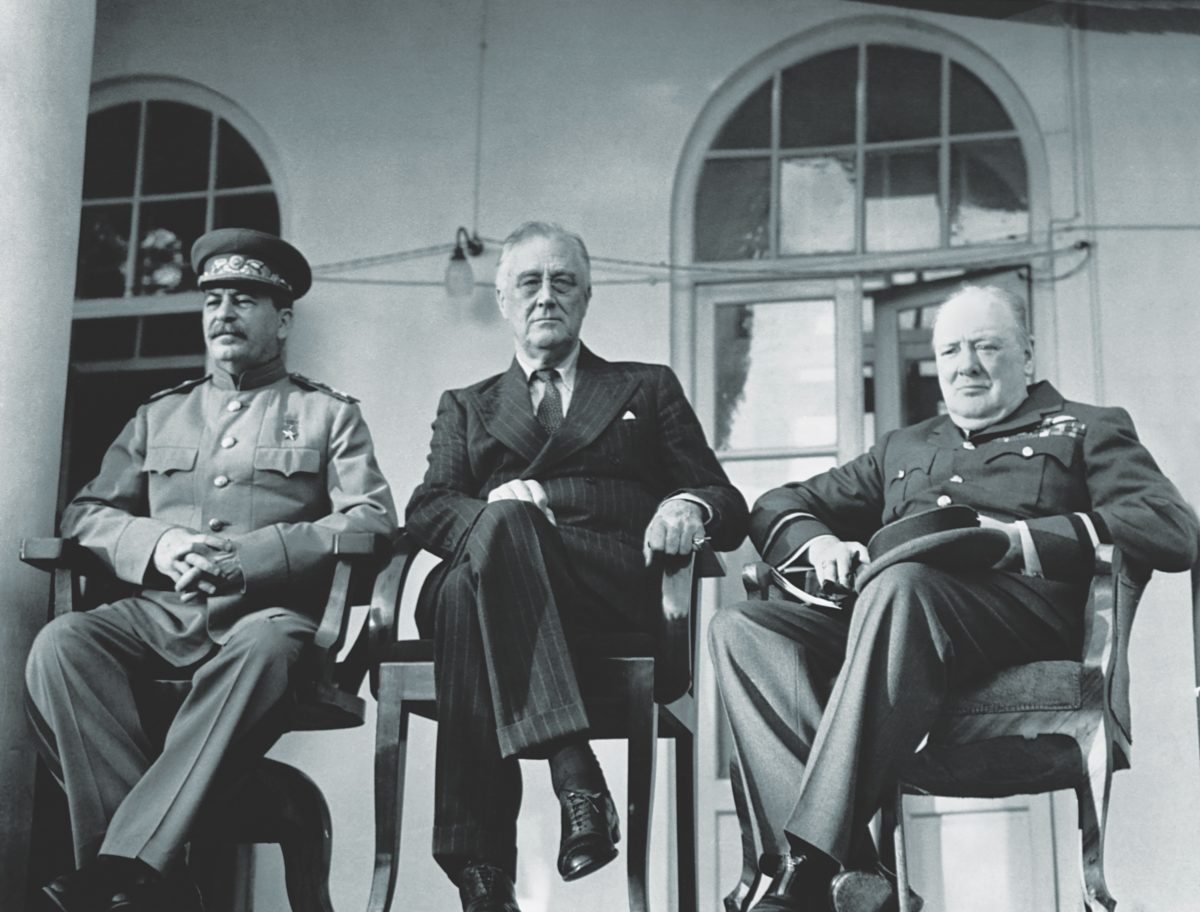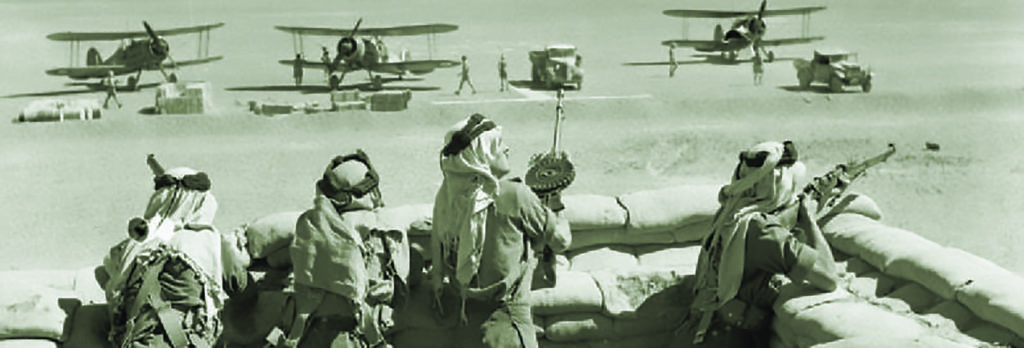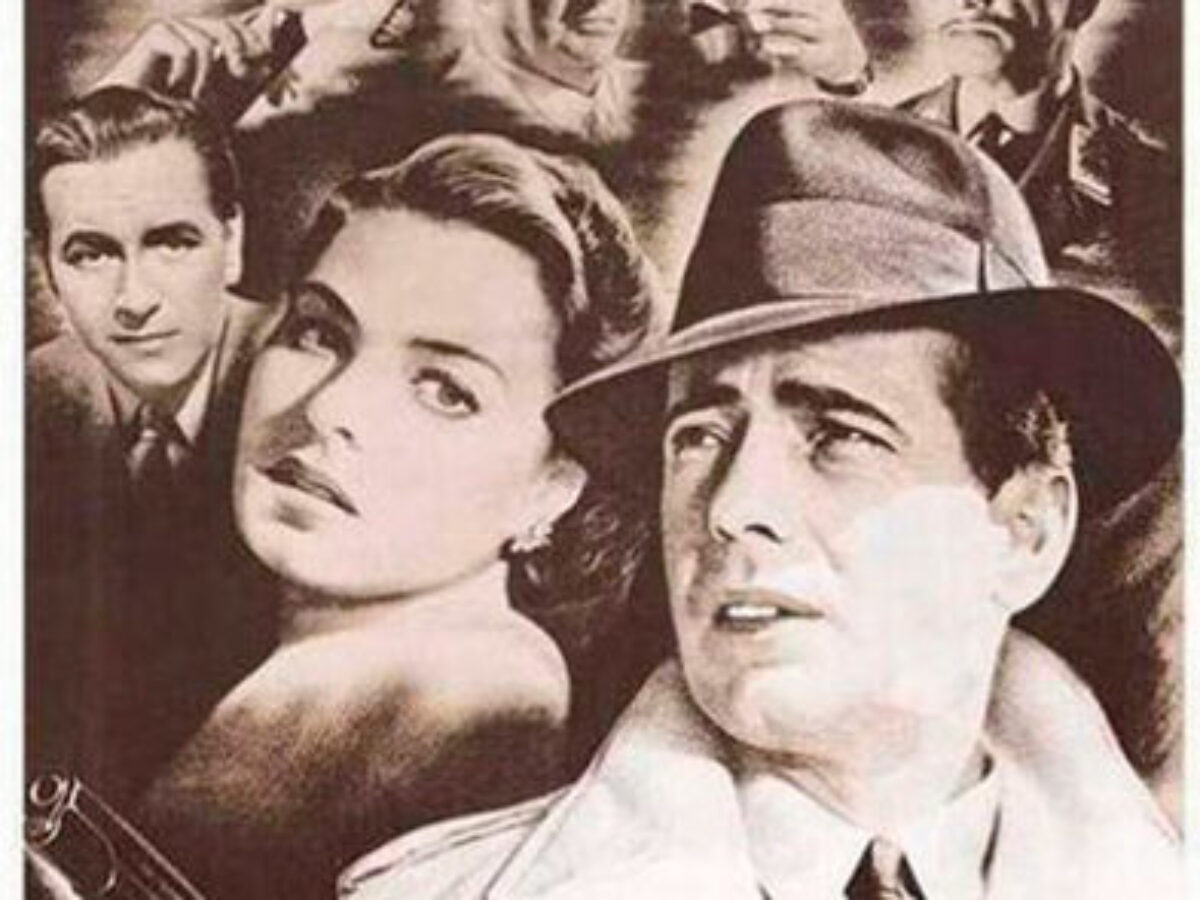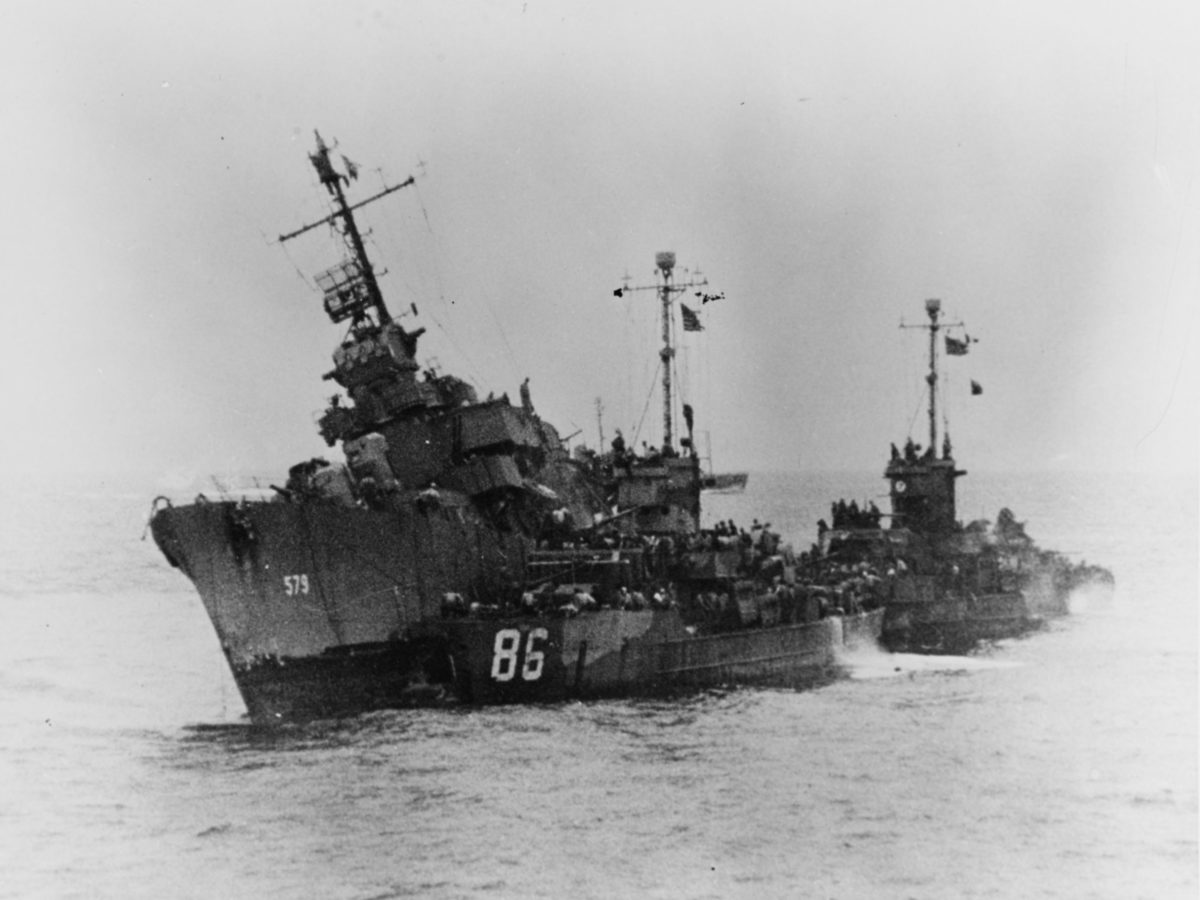WINSTON CHURCHILL was scared. The prime minister’s concerns about security began growing as soon as his plane from Cairo landed at Gale Morghe Airport outside Tehran at around 11 on the chilly morning of November 27, 1943.
Recommended for you
He had hoped to tiptoe unnoticed into the Iranian capital for the secret four-day conference, set to begin the next day, with American president Franklin D. Roosevelt and Soviet premier Joseph Stalin. It would be the first face-to-face meeting between the three Allied leaders—sessions that would determine the broad strategy for the final push through Europe. But moments after he had gotten off the plane, he found himself confronted by a small welcoming ceremony hosted by the British ambassador.
That proved to be only a minor annoyance when compared with the fiasco he was caught up in as soon as his car pulled out of the airfield. The road was lined with glowering Iranian cavalrymen sitting high on their mounts, each rider decked out in brightly colored comic-opera uniforms. The pageantry continued for a full three miles, and all a fuming Churchill could think, as he’d later recall in his memoir, was that the gaudy display was an announcement “to any evil people that somebody of consequence was coming,” while at the same time precisely highlighting his route.
Churchill’s initial apprehensions crossed over to a sickening fear when his car turned into the block leading to the British embassy compound—his home for the conference—and a roadblock forced it to a sudden halt. Seated in the rear of the open-topped car, he felt as if he might as well have had a bull’s-eye pinned to his back. “There was no kind of defence at all against two or three determined men with pistols or bombs,” he realized. All the trapped prime minister could do was find solace in a wry irony: “If it had been planned out beforehand to run the greatest risks, and have neither the security of a quiet surprise arrival nor an effective escort, the problem could not have been solved more perfectly.”
In contrast, when FDR’s C-54 landed at 3 p.m. on the dot that same day, there was no ceremony—only a brisk and efficient ride in a car with bulletproof windows through empty streets to the American legation on the outskirts of Tehran. The well-executed plan had been designed by Michael Reilly, the hulking 33-year-old former college football player from Montana (“an Irish cop with more brawn than brains,” according to his own self-deprecating description) who headed the president’s Secret Service detail.
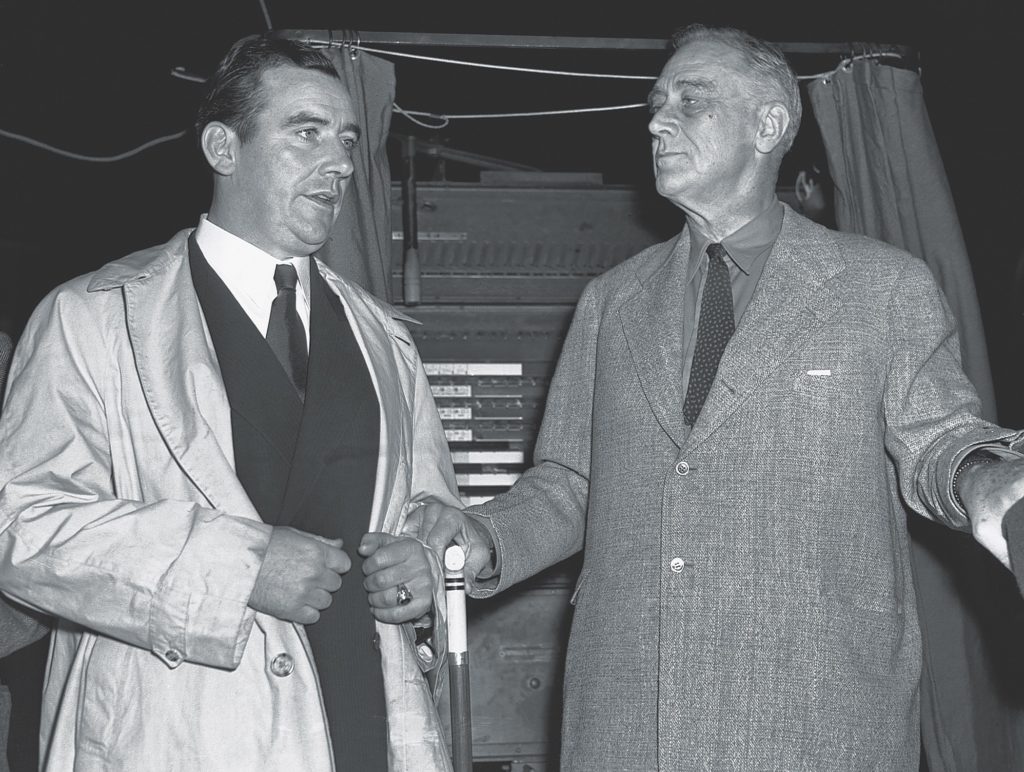
Reilly had just settled “the Boss,” as he always referred to the president, into his second-floor suite at the legation, when he received word that General Dmitry Arkadiev, an officer with the Soviet secret police force, the NKVD, was downstairs wanting to talk. Reilly had met him during an earlier reconnaissance trip to Tehran and was pleased that the collaboration he had initiated was apparently receiving serious attention.
He assumed the general had come to announce Stalin’s arrival at the Soviet embassy that day, and to confirm their previous agreement: a half-dozen Secret Service men would be working hand in hand with the security-conscious Russians. In the weeks before the conference, the Soviets, who were already the dominant military presence in Tehran, had beefed up their forces with an additional 3,000 troops under the harsh command of General Andrei Krulev and had dispatched a squadron of intelligence officers to monitor the city and its surrounding areas. A look, though, at the general’s grim face, his damp jowls, and his blank hangman’s eyes, and Reilly at once understood that he had misjudged the purpose of Arkadiev’s visit.
The Nazis have dropped 38 parachutists around Tehran over the past few days, the general announced gravely, according to the account Reilly wrote in his chatty 1947 memoir, Reilly of the White House. Then the Russian paused dramatically before going on in the same low voice to state that they had been captured by his men.
The Secret Service man breathed a silent sigh of relief. When Reilly finally felt able to speak, he blurted out the first thought that came into his mind. “Are you sure it was thirty-eight?” he asked, immediately realizing it was an inane question.
“Very sure,” said the Russian. “We examined the men we caught most thoroughly.”
Reilly held Arkadiev’s stare, thinking, “the way he said it made me happy I had not been present when the Nazis were questioned.” Nevertheless, it was difficult to be too judgmental. The threat had been removed. The president was safe.
Then the general said that in the course of the interrogation, the prisoners revealed that his men had not captured all of the parachutists. Six heavily armed commandos were still on the loose. He had no idea where they were, or where they might strike.
And all at once Reilly’s blood ran cold.
THE GERMAN COMMANDOS at large in the city were assassins. Their mission, which the Nazi High Command codenamed Operation Long Jump: to kill Roosevelt, Churchill, and Stalin at the Tehran Conference.
In the decades since the war, the details of Long Jump have been widely disputed. Conflicting versions of the events have been published, and some scholars have gone so far as to dismiss previous accounts of the mission as “Soviet disinformation”—a tale told by “purveyors of Stalinist mythology.” Yet while historical battle lines have been drawn and even politicized, it is now possible to reconstruct what happened that week in 1943 in Tehran and tell with facts and authority the story of a Nazi plot that had the potential to change the world. The secret history of Long Jump is thoroughly revealed in an examination of interviews with participants conducted after the war and recently declassified NKVD documents, as well as published interviews with Soviet intelligence officers; memoirs of generals, diplomats, intelligence agents, and official bodyguards who were in Iran; and is supported by declassified British intelligence reports and Wehrmacht archival records.
Ironically, the plot owed its inchoate beginnings to a statement Roosevelt had made earlier that year. On January 24, 1943, the final day of the meetings in liberated Casablanca between the American president and the British prime minister, FDR took it upon himself to set the uncompromising terms that would end the war. “We shall fight until Germany’s, Italy’s, and Japan’s unconditional surrender,” he announced with stony determination at the press conference concluding the summit.
At that point in the war, with the Allied invasion of Europe a looming inevitability, most of the Nazi leadership had quietly conceded that victory on the battlefield was a lost cause. In its place, a resigned, coolly pragmatic endgame strategy had emerged: the Reich would snatch stalemate from the jaws of defeat. The Wehrmacht would keep the world at arms, keep the life-and-death struggle going, until an acceptable peace could be negotiated.
But with those unyielding words—“unconditional surrender”—the Nazi High Command’s fantasies were ground into wistful sand. There would be no negotiated peace. Instead, the generals and their willing underlings abruptly understood they faced a rapidly approaching future in which they would have to answer to Allied military tribunals for their unforgivable crimes, for their methodical extermination of Jews and other civilians, for the horrors they had so complacently let loose on the world. Retribution was inevitable.
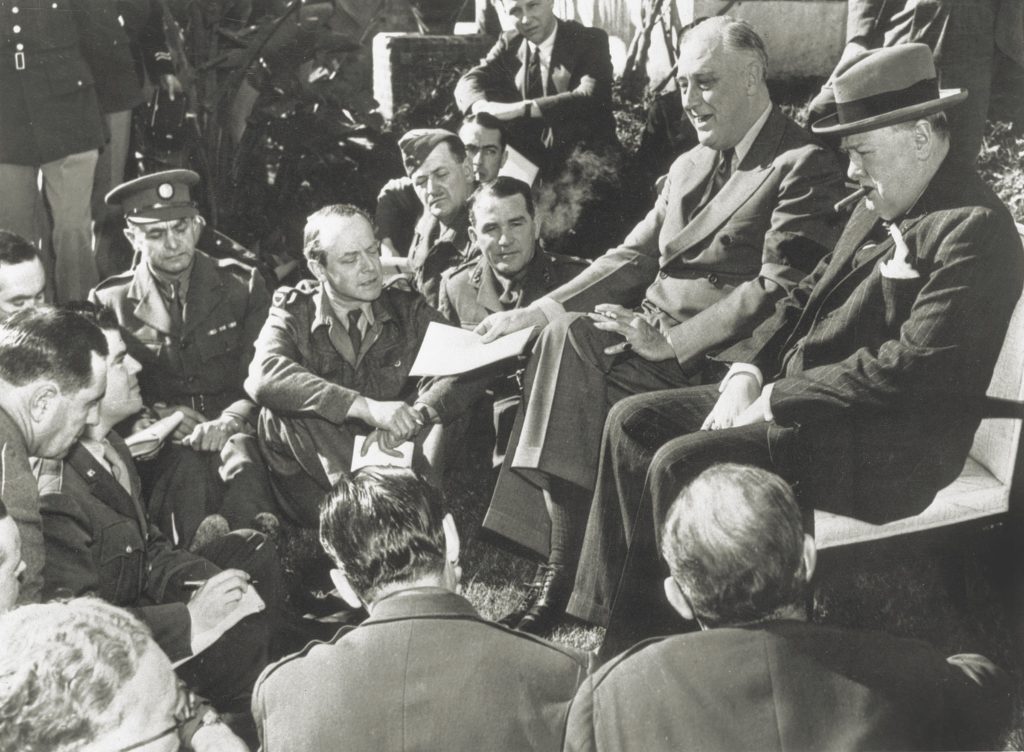
Unless—they could remove the Allied leadership demanding the draconian “unconditional surrender.” With a new Big Three, the war would still be lost, but there would be the possibility that a peace, a more equitable accord, could be won at the negotiation table. And the High Command would not have to pay with their lives.
Still, the two spymasters who ran cloak-and-dagger operations for the rival German foreign intelligence services—General Walter Schellenberg, head of Section VI of the Nazi Party’s Reich Security Main Office, and Admiral Wilhelm Canaris, director of the Abwehr, the military intelligence operation—realized that a bold assassination mission on this scale was simply wishful thinking. The Allied leaders were, arguably, the three most closely guarded men in the world. The planning, the logistics, the operational challenges—all of these made it an impossible mission.
Then on September 12, 1943, an impossible mission—a commando operation set in motion by the orders of Adolf Hitler himself—succeeded. Twelve German gliders dropped out of the sky and came down in a rush of shrieking wind, landing on the mountaintop where Benito Mussolini, the Fascist dictator who’d ruled Italy with a heavy hand, was now imprisoned in a well-guarded hotel. SS Captain Otto Skorzeny led his men racing into the hotel; the Italians surrendered without much of a fight; and three days later Skorzeny and Mussolini were having a celebratory midnight tea with the Führer at the Wolfschanze, Hitler’s secluded headquarters deep in the woods of East Prussia.
For the first time, Schellenberg and other members of the High Command began to believe that if Skorzeny, newly promoted to major, could pull off one miracle, well, why not another? It was in the aftermath of that triumph that—again on Hitler’s orders, according to recently declassified Soviet intelligence files and numerous postwar interviews with participants—the man being touted in the Allied press as the “Most Dangerous Man in Europe” was given the operational command of Long Jump. (Mention of the assignment appears nowhere in Skorzeny’s memoirs: when he was arrested for war crimes after the war, the mission did not come up in Allied questioning, and he was careful not to mention it afterward. But he confirmed his participation in an interview in Madrid in 1950 with Hungarian journalist Laslo Havas and, according to Israeli sources, boasted of his role to the Mossad, which employed him as an asset.)
The German intelligence services were aware that the Big Three were planning to meet together for the first time: the conference was being openly discussed in intercepted diplomatic cable traffic and even in the press. The three targets would all be conveniently assembled in one site. But the location and the date of the conference remained top secret. And without these two crucial bits of intelligence, even the Most Dangerous Man in Europe wouldn’t be able to launch an attack.
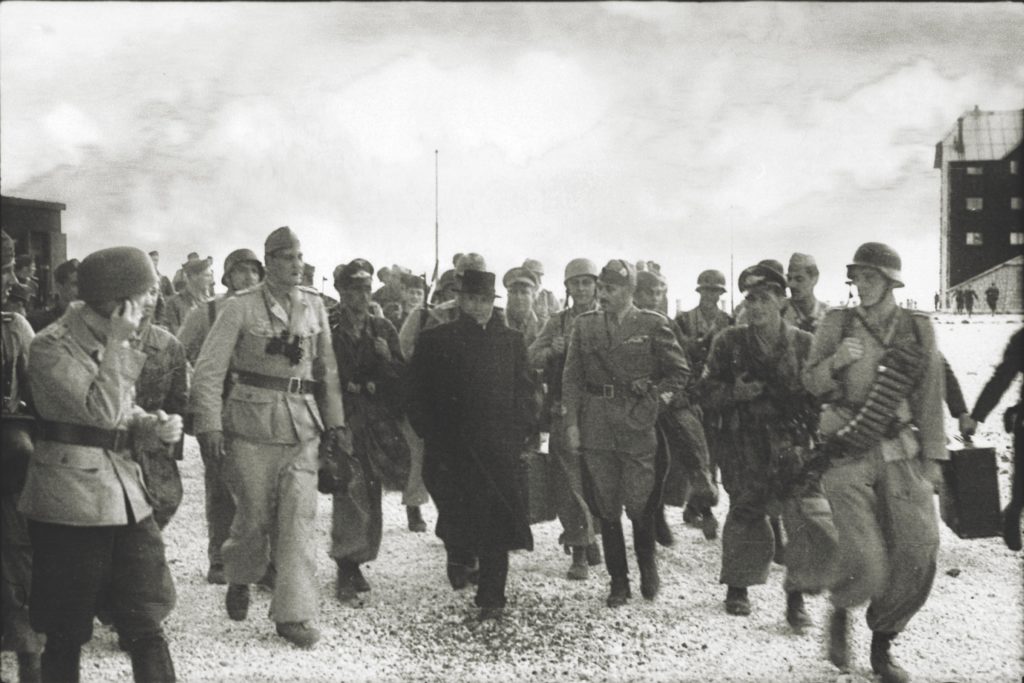
IN THE SPY TRADE, an uninvited guest bearing gifts is one that no intelligence officer wants to welcome. The caution is born out of the difficult questions the arrival of this would-be secret agent poses: Is he (or she) the real thing, offering a genuine intelligence windfall? Or is the unexpected source a double agent—part of a carefully conceived enemy plot to get a foot inside your house and spread disinformation?
This was the unsettled terrain that Schellenberg, he concedes in his memoir, found himself carefully maneuvering through in the tail end of October 1943. A man claiming to be the valet of the British ambassador in Ankara, Turkey, had proposed a deal. In return for 20,000 pounds sterling (about $100,000 in wartime dollars, or more than five times the average annual American income at the time), the walk-in mystery man would hand over “photographs of the most secret documents of the British embassy.”
In the end, Schellenberg decided his agents should accept the offer; the fact that the currency he handed over was counterfeit—the skillful handiwork of a German forgery operation—helped assuage his initial misgivings about whether to trust the informant. But when Schellenberg examined the product, he rejoiced; the purloined documents were “quite breathtaking.” In the week that followed, the deliveries of “highly secret correspondence between the British Embassy in Ankara and the Foreign Office in London” kept arriving at Schellenberg’s headquarters on the outskirts of Berlin. The yield was so impressive that the valet was quickly given the code name “Cicero” after the renowned Roman orator, because his stolen papers spoke so eloquently.
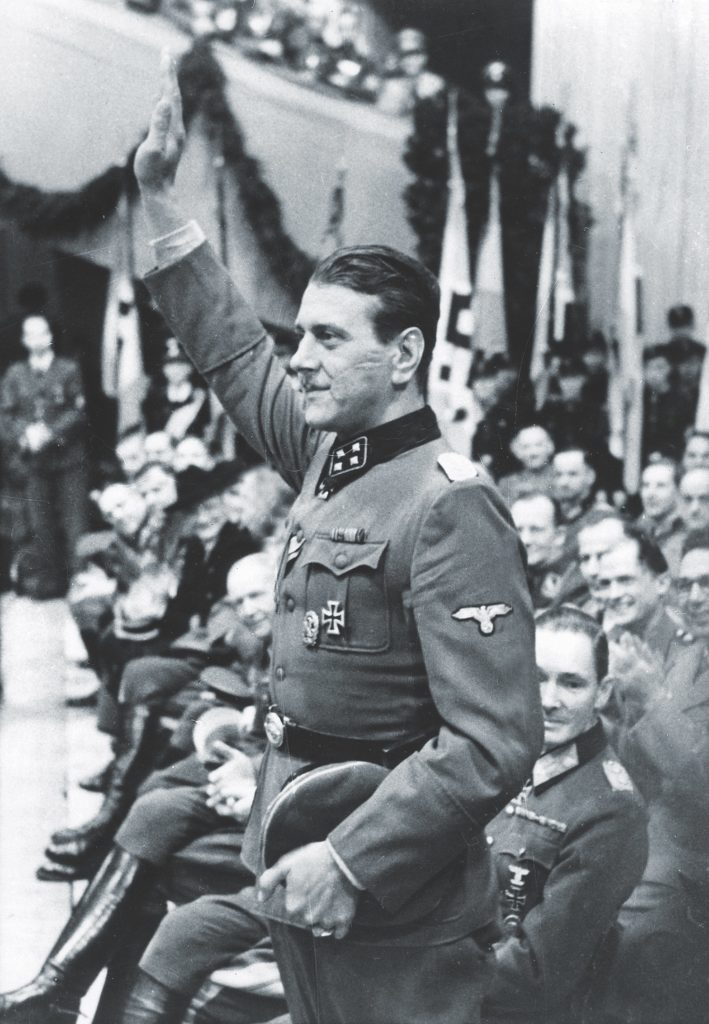
It was in this way, sometime in the second week of November 1943, that Schellenberg found out that the Big Three would be meeting in Tehran.
Of all the places in the world—Tehran! Schellenberg was convinced the operational gods had shined on his mission. He was well aware of the succession of events—the marriage of foresight, timing, and luck—that had set the stage for Operation Long Jump. In the war’s early years, as recently declassified German and Allied documents reveal, agents of the Abwehr and the SS security service SD had gone undercover in Iran, building networks of assets and finding safe houses. And despite the Allied invasion of that country in August 1941, two of the German penetration agents had continued to remain active—one in Tehran, the other in the tribal hill country.
In a series of clandestine missions over the prior six months, as detailed in Wehrmacht archive documents and memoirs of German intelligence officers, new teams of sabotage commandos had parachuted into Iran and established procedures for aerial-insertion missions, delivered radio transmitters capable of communicating with Berlin, and reinforced wavering tribal commitments to the Reich.
And now, on top of all of that, the Führer had chosen Otto Skorzeny—the very tactician who, according to the German wartime documents as well as his own statements, had supervised the training and execution for these recent covert missions into Iran—to direct the assassination of the three Allied heads of state.
It was as if unseen forces had fit the pieces together, propelling events with the inexorable momentum and inevitability of a Greek drama. The impossible mission now seemed very possible, even predestined.
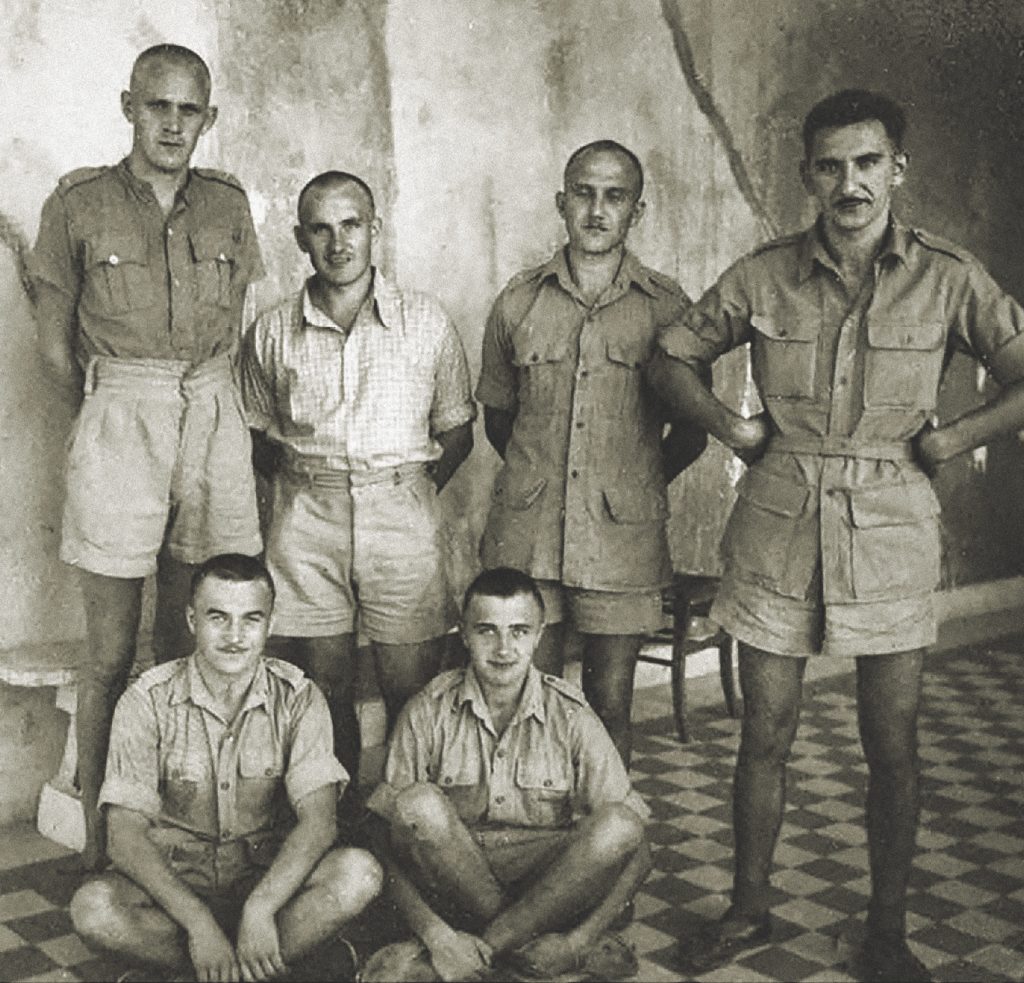
AS THE GERMANS set feverish preparations for Operation Long Jump in motion, a seemingly routine request was made to Section VI’s Iranian desk to provide Schellenberg with daily weather reports for the Iranian cities of Qazvin and Qom, roughly 80 miles northwest and southwest of Tehran, for the week beginning November 22, 1943. But that order, as documented in the declassified Soviet history of the events and substantiated by British and German intelligence files, would have ramifications.
Roman Gamotha, the deskman in charge, dutifully prepared the information and regularly passed it on to the SS general. He had no knowledge of what sort of operation Schellenberg was mounting, but it apparently involved aerial insertions into Iran. That was the intelligence that Gamotha—a double agent working for the Soviets—promptly relayed to his handlers at the Russian spy headquarters, called Moscow Center.
The NKVD spymasters, however, immediately understood the importance of this information: the Nazis were sending commando teams into Iran to target the Tehran Conference. So when the Nazi commandos jumped out of their Ju 290 four-engine transports and floated down in darkness to the Iranian desert, Russian troops were waiting. Most of the parachutists were shot out of the sky, killed before they even reached the ground. Several, however, were captured and interrogated.
It was during their questioning that the Russians, as Mike Reilly later wrote, learned that one plane carrying a team of commandos—six well-trained and committed men—had been blown off course. And these six assassins were still at large.
General Arkadiev had not told Reilly the entire story that afternoon in the American legation, but what he heard was enough to leave him feeling stunned and angry. The German paratroopers, Reilly decided, “could have been dropped for one of two reasons”: either to “sabotage the railroad” used to carry war materiel north into the Soviet Union or to “assassinate the Allied leaders.”
Reilly had no doubt that “half a dozen fanatics with the courage to jump from airplanes could probably figure out some way to get a shot in.” He also suspected, “it was logical to assume that, with the Nazi ‘chutists shooting, one shot would be plenty.”
Unless Reilly could stop them first. He’d need to find the killers before they attacked.
AT THE DECIDEDLY undiplomatic hour of 9 a.m. on November 28, 1943, Averell Harriman—the American ambassador to the Soviet Union, who had traveled from Moscow to Tehran for the conference—knocked on the door of the president’s bedroom in the Amer-ican legation. As the ambassador later recounted in diplomatic papers that are now part of the National Archives’ official account of the conference, he had been summoned from his warm bed in the middle of the night by Vyacheslav Molotov, the Soviet foreign minister, to an emergency meeting. There, as he now needed to report to Roosevelt, he had received a warning. And a threat.
The warning, as Harriman relayed it, was succinct: “The risk of assassination of Mr. Churchill and Marshal Stalin while coming to visit President Roosevelt was very real.” The American legation, after all, was dangerous miles away from the walled compound in the city’s diplomatic district that housed both the British and Soviet embassies.
The threat was no less ominous: “We would be responsible for any injury that Marshal Stalin might suffer in driving through the town to consult with President Roosevelt.” And by “injury,” Harriman explained, in case the president had missed the point, Molotov meant “assassination.”
The foreign minister, however, had not just thrown thunderbolts. He’d offered a suggestion: he reiterated a previous invitation for the president to stay in the Soviet embassy. Only now, the rationale for the move was no longer for convenience’s sake; with Nazi assassins on the loose, it was a necessary precaution. According to U.S. government files, Harriman—relaying the Russian’s logic—told the president that the move “would bring the three Heads of State so close together that there would be no need for any of them to drive about town.” The British agreed. Churchill recalled that “I strongly supported Molotov in his appeals to move forthwith inside the Soviet Embassy.”
Pressured by both Allies, FDR turned to Mike Reilly, the man in charge of his security, for advice. And Reilly was only too glad to give it. With the passing of each new hour the initial intelligence had turned more despairing. A house-to-house search in Tehran, home to nearly one million inhabitants, was underway. Further, a joint Allied decree had been issued: a $20,000 reward—a fortune!—would be paid for any information leading to the arrest of six German parachutists at large in the city. Tehran’s marketplaces were quickly jumping with the news. Yet so far neither strategy had turned up any sign of the assassins.
Reilly decided the German commandos must have help. But who—a single contact? A network? Locals? Embedded agents? The fact that the six men were still at large, and that the assassins had not launched an immediate attack, only served to reinforce the creeping horror Reilly now accepted as truth: the killers were waiting, patiently biding their time for the single moment that had been predetermined in Berlin, a time when they’d be able to slip past the Allied security and strike.
So when the Boss posed the question, the Secret Service man did not hesitate. He was “in complete agreement” with a move to the better-protected heart of the city.
“All right,” announced the president. “When do we move?”
It was only then that Reilly realized he had a new problem. How would he safely get the president to the Soviet embassy? “It would have been a tough enough job normally, but with six Nazi paratroopers around somewhere…I had no stomach for sending him through the crowded streets of Tehran.”
Nevertheless, at three that afternoon Reilly gave the order for the presidential cavalcade to pull out of the American legation. Two jeeps filled with armed, attentive soldiers led the way. Two more, similarly loaded for war, had the rear. In the middle of the motorcade was the president’s limousine, the man in the rear seat raising a hand to acknowledge the cheers of the locals. The man in the back seat, though, was not the president. It was Secret Service agent Robert E. Holmes.
The moment the cavalcade pulled out, Reilly had bundled the president into a dusty army sedan. He’d ordered the Boss to keep his head down, and FDR—enjoying the adventure—obeyed. With only a single jeep leading the way, the two vehicles raced at mad speed through Tehran’s side streets. The president was being wheeled into his suite of rooms at the Soviet embassy while Bob Holmes continued to wave to the crowds assembled along the official route.
TUESDAY, NOVEMBER 30, 1943—the third day of the conference and the day of Winston Churchill’s 69th birthday—began as another cold morning in Tehran. Yet the day’s events would be momentous.
A birthday celebration in the British embassy had been scheduled for that evening, and Reilly by now had come to suspect that that would be the moment of the assassins’ attack. At the dinner the three men were seated shoulder to shoulder at the table—a trio who, as Churchill would say, “together controlled practically all the naval and three-quarters of all the air forces in the world, and could direct armies of nearly twenty million men.” Reilly could not put aside the horrifying expectation that at any moment six commandos would snuff out their lives.
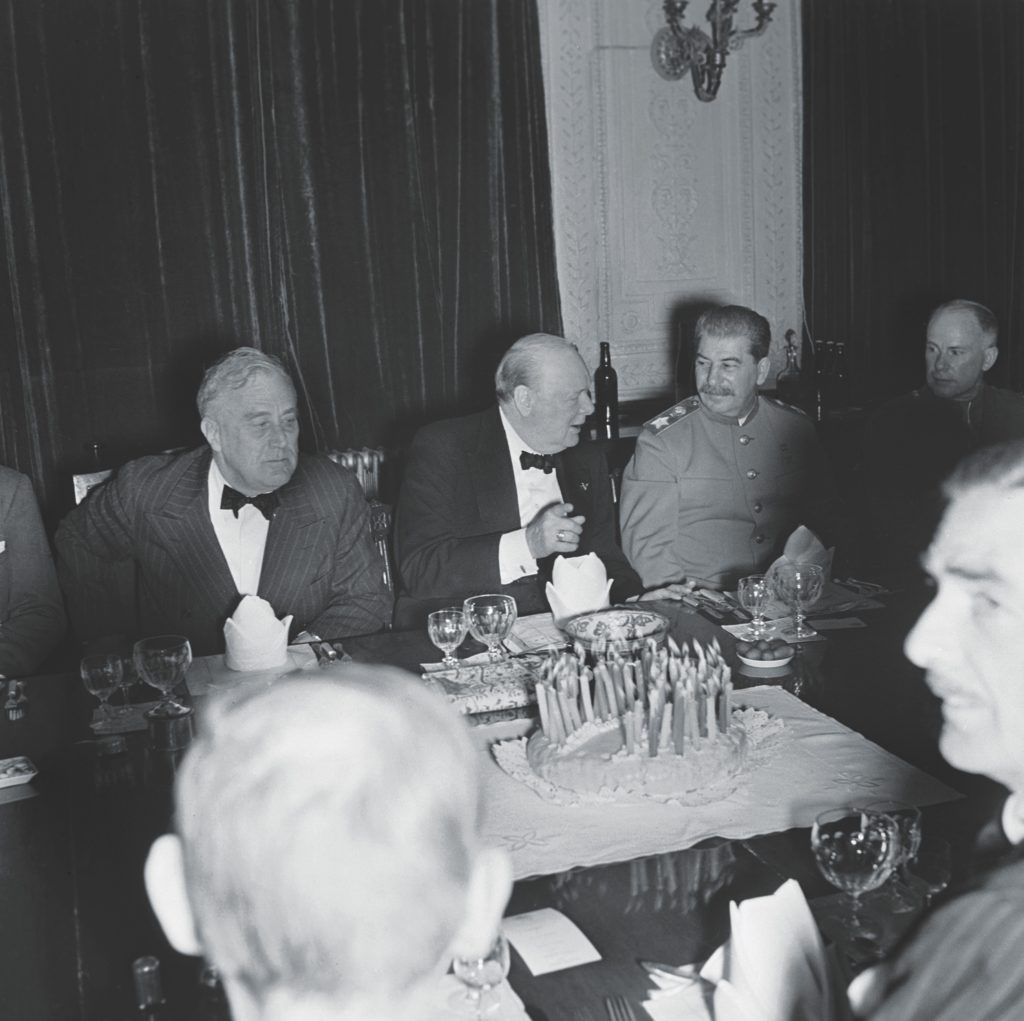
Instead, that night it was the commandos who were betrayed. One of their Iranian assets, enticed by the gaudy promise of a $20,000 reward, had informed the Russians of the location of the safe house where the team had gone to ground. Russian troops quietly moved into position after dark that evening, surrounding the house, which belonged to an Iranian police officer. According to the Soviet account of the night’s events, the turncoat was sent back into the building to offer an ultimatum: either the six Nazis come out with their hands up, or they will be slaughtered.
The door opened for the traitor and a strip of light momentarily brightened the street. He entered, and the door closed behind him.
There is no surviving record of the deliberations inside the hideout. There is no transcript of what the traitor said—of whether he succeeded in conveying the Soviets’ ultimatum. All that is definitively known is that within moments after the door closed there was an ear-shattering boom, followed by a harsh white glow that must have lit up the night sky for miles. And the building collapsed to the ground in a heap of smoking rubble. Rather than surrender, the Nazi commandos had apparently decided to take control of their own destinies. They had detonated their own explosives. There were no survivors.
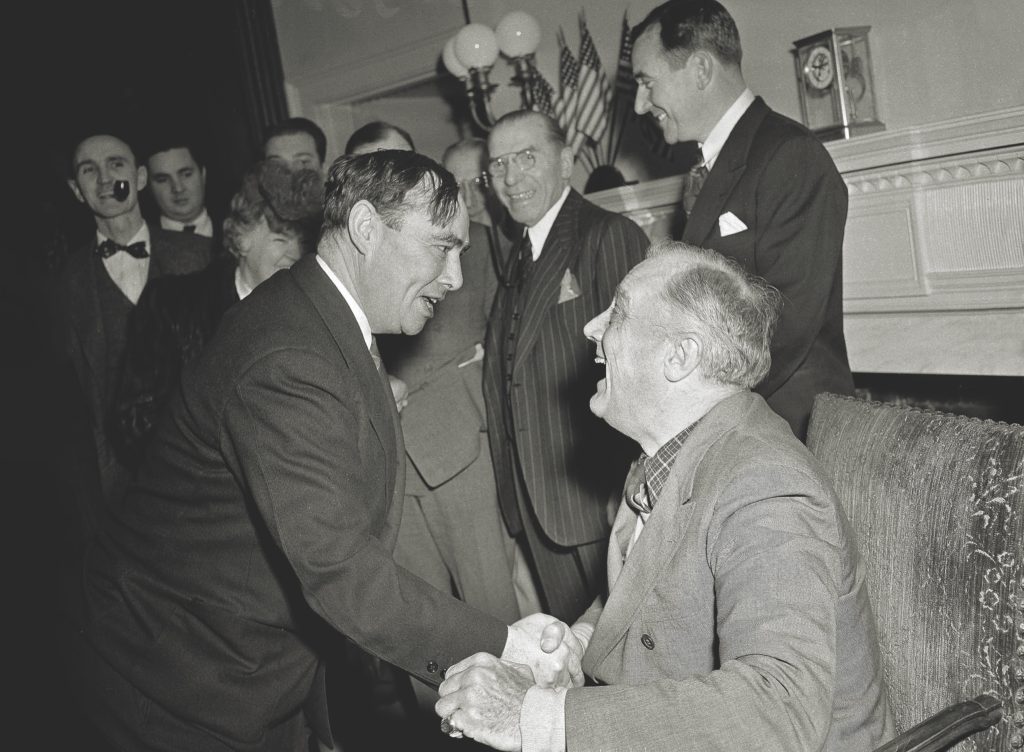
REPORTERS CRAMMED into a tight semicircle in the Oval Office facing President Roosevelt. The president sat in his wheelchair behind the massive walnut-veneered desk that had once belonged to his predecessor, Herbert Hoover. Mike Reilly stood, as he always did during the presidential press conferences, to the Boss’s right, near a casement window, but never too far away. It was December 17, 1943, and the press had come to hear about the groundbreaking conference in Tehran.
“In a place like Tehran there are hundreds of German spies, probably, all around the place,” FDR said. “I suppose it would make a pretty good haul if they could get all three of us going through the streets.”
“There was no use going into details,” he added. Then the president laughed his hearty, booming laugh, and the press joined in too.
Reilly’s face, though, remained set, as if cast in stone.
There were no follow-up questions from the reporters, and the president quickly moved on. ✯
—Howard Blum is the author of Night of the Assassins: The Untold Story of Hitler’s Plot to Kill FDR, Churchill, and Stalin, which served as the basis for this story. Published in June 2020, the book is based on memoirs, archival documents, and recently declassified intelligence reports. Blum, a former New York Times reporter and a two-time nominee for the Pulitzer Prize for Investigative Reporting, has written several bestselling nonfiction books.
This article was published in the August 2020 issue of World War II.

